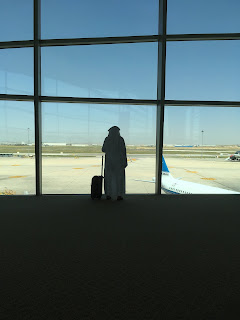We're up to our third city in Transylvania – Brasov, Sibiu and now Cluj-Napolica. They're all reasonably big, but I'd barely heard of them, despite the occasional dip into Romanian history.
Whereas Bulgaria surprised for the amount of Roman stuff, Transylvania has surprised for the huge amount of military architecture. We've seen a Dacian hillfort, some medieval castles, several walled towns and early and late star forts. Alison puts up with it, but I've absolutely been in my element!
However, much as I enjoy Iron age forts, castles and bastion fortresses, the unique feature of the area is the "fortified churches". Actually the churches themselves are standard Lutheran churches, although some of the bell towers doubled with a military use, but they are surrounded by defensive walls.
The simplest ones are a church surrounded by a high stone wall with ramparts.
Some of them are veritable castles, with two rings of high walls and regular towers. A few are virtual Disney efforts.
There are 150 left, out of perhaps 300. Basically virtually every village in eastern Transylvania had one.
They are all Lutheran, because the villages (and towns) were "Saxon", which means in this context ethnic Germans. (There are a couple of ethnic Hungarian Szekely churches too, but they are also Reform.) German settlers were imported into Transylvania to help build its economy in the Middle Ages, and because they had to defend themselves against the Turks they were permitted to build these fortifications. The village folk, when threatened, moved themselves and their movables into the church for safety.
The towns were walled on the same basis, often with individual guilds building separate towers, which leads to every tower in the defensive scheme being different.
Oddly there aren't many actual castles here. Those there are were mostly lordly residences, with only secondary defensive features. We went to Bran castle – which is sold as Dracula's but is no such thing. It was both expensive (in local terms) and not that good – we saw many similar in Switzerland.
The fortified churches, however, have been fascinating, even though we haven't been able to visit more than three (although we have walked around a few more).
We've had two weeks here, looking at this and that. A fan of fortifications might want a month though, there is so much to see.
Whereas Bulgaria surprised for the amount of Roman stuff, Transylvania has surprised for the huge amount of military architecture. We've seen a Dacian hillfort, some medieval castles, several walled towns and early and late star forts. Alison puts up with it, but I've absolutely been in my element!
However, much as I enjoy Iron age forts, castles and bastion fortresses, the unique feature of the area is the "fortified churches". Actually the churches themselves are standard Lutheran churches, although some of the bell towers doubled with a military use, but they are surrounded by defensive walls.
The simplest ones are a church surrounded by a high stone wall with ramparts.
A fairly standard one. On Sibiu to Sigisoara Road
Biertan
There are 150 left, out of perhaps 300. Basically virtually every village in eastern Transylvania had one.
They are all Lutheran, because the villages (and towns) were "Saxon", which means in this context ethnic Germans. (There are a couple of ethnic Hungarian Szekely churches too, but they are also Reform.) German settlers were imported into Transylvania to help build its economy in the Middle Ages, and because they had to defend themselves against the Turks they were permitted to build these fortifications. The village folk, when threatened, moved themselves and their movables into the church for safety.
The towns were walled on the same basis, often with individual guilds building separate towers, which leads to every tower in the defensive scheme being different.
Oddly there aren't many actual castles here. Those there are were mostly lordly residences, with only secondary defensive features. We went to Bran castle – which is sold as Dracula's but is no such thing. It was both expensive (in local terms) and not that good – we saw many similar in Switzerland.
The fortified churches, however, have been fascinating, even though we haven't been able to visit more than three (although we have walked around a few more).
We've had two weeks here, looking at this and that. A fan of fortifications might want a month though, there is so much to see.






























